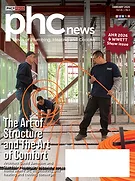A UCLA report found that California water agencies are unable to keep close track of how much their own pipes are leaking.
Researchers with the UCLA Institute of the Environment and Sustainability surveyed 10 water agencies in the Los Angeles region under conditions of guaranteed confidentiality.
The report found that 6 of the 10 surveyed agencies did not distinguish between water leaks and unbilled or unauthorized water uses, and many failed to follow best practices for leak detection.
The four agencies that do measure leaks reported the amount of water lost at 3 percent to 4 percent, which the researchers described as “an improbably low percentage” compared to the best international rates of 10 percent.
Israel, renowned for water conservation, reports a 10 percent water-loss rate, and experts in Australia, using more sophisticated technology than that used in California, also see 10 percent as a likely minimum leakage rate.
You can read the full report here.





